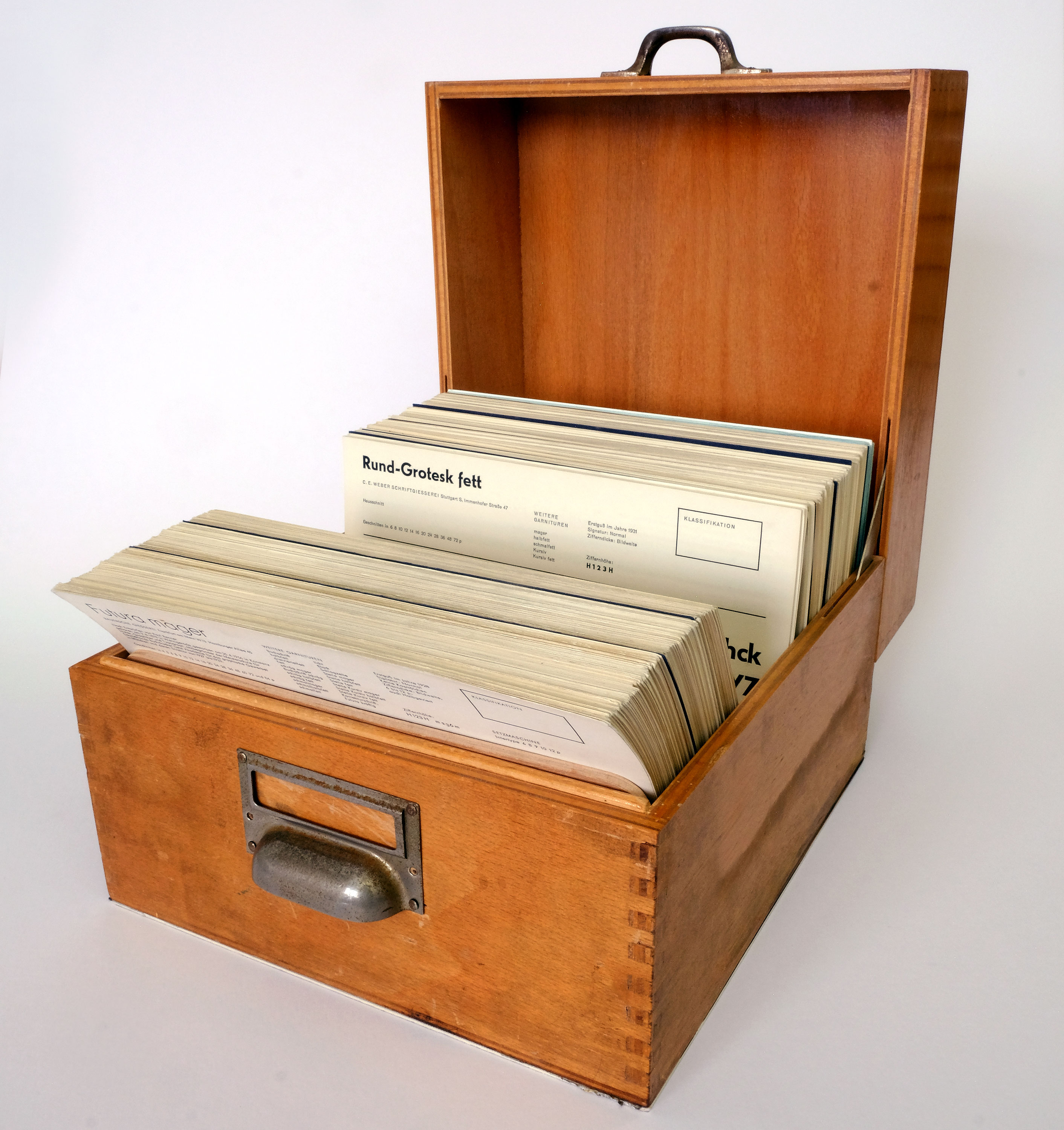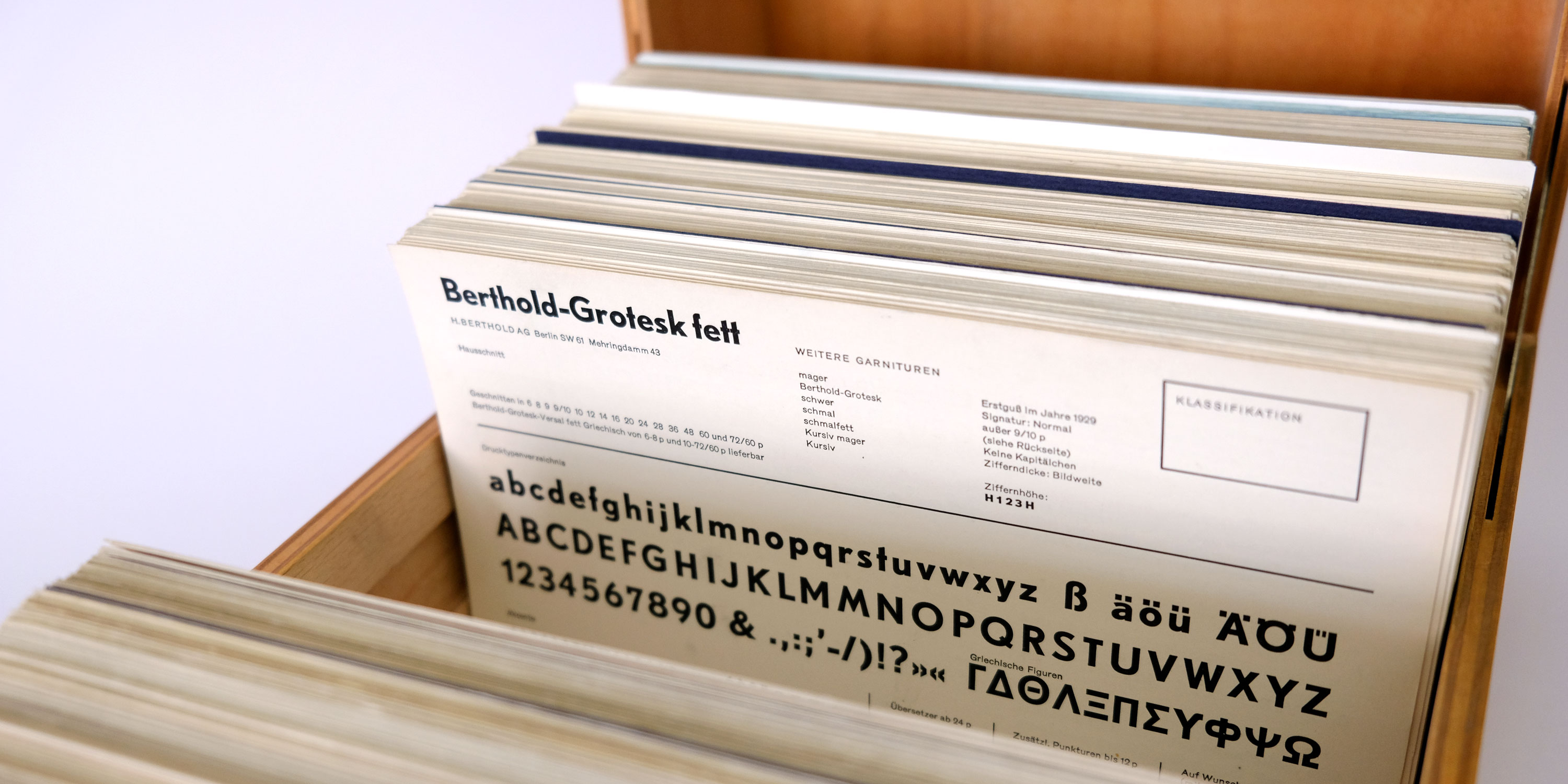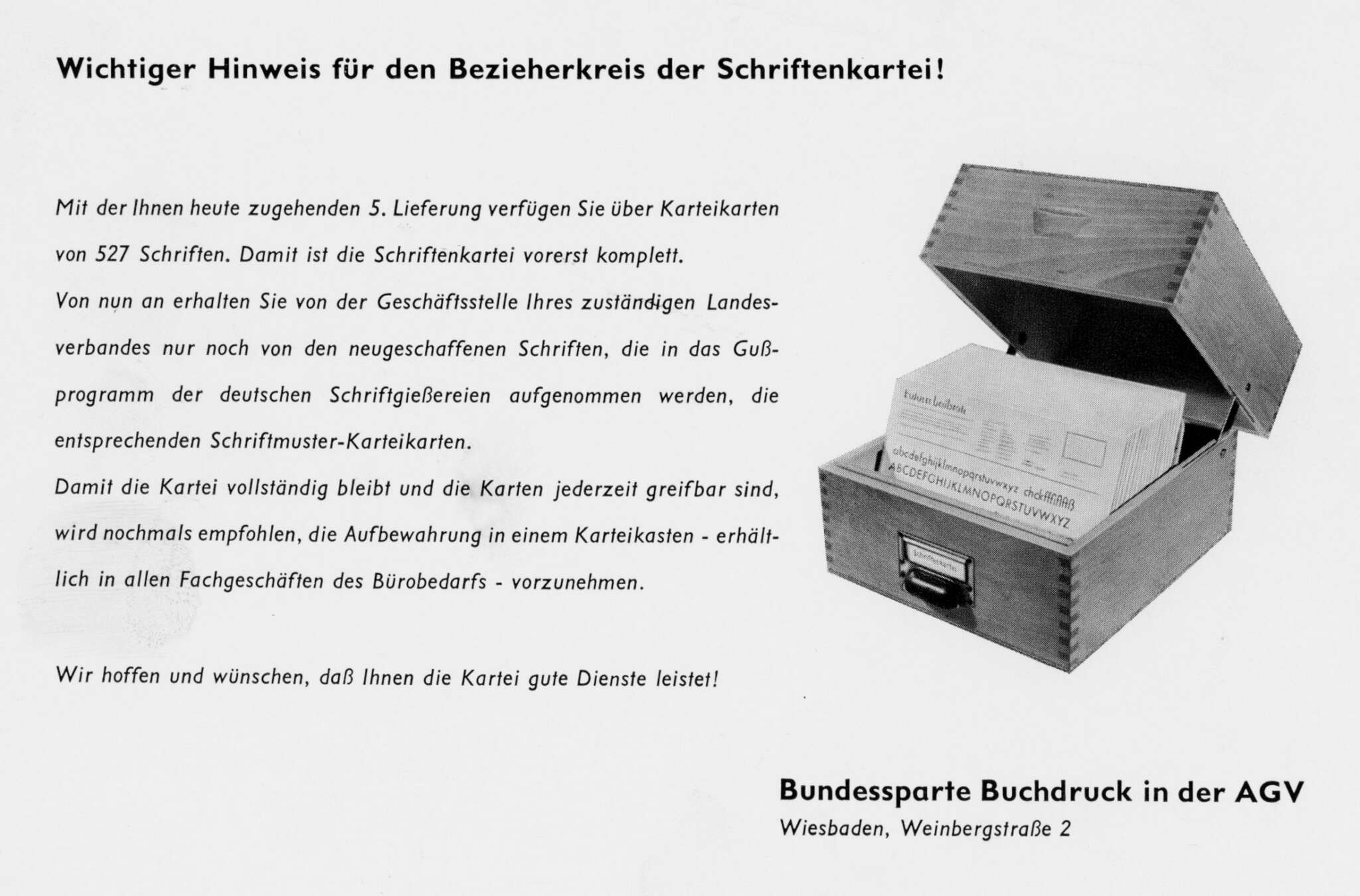Wörgötter, Michael. “Schriftenkartei [Typeface Index], 1958–1971.” Photo sharing social website. Flickr, 2023. https://www.flickr.com/photos/letterformarchive/albums/72177720310834741. License: Creative Commons BY-NC-SA 2.0 https://creativecommons.org/licenses/by-nc-sa/2.0/
Found via: Coles, Stephen. “This Just In: Schriftenkartei, a Typeface Index.” Letterform Archive, November 3, 2023. https://letterformarchive.org/news/schriftenkartei-german-font-index/.


